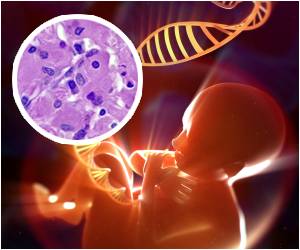People with Down syndrome are living longer than ever before, but the increased use of prenatal testing and other genetic diseases had a counterbalancing effect.

‘The numbers of people with Down syndrome living in a state is influenced both by the numbers of babies born each year and by the expanding lifespan of people with Down syndrome.’





"The numbers of people with Down syndrome living in a state is influenced both by the numbers of babies born each year and by the expanding lifespan of people with Down syndrome," explains Brian Skotko, MD, MPP, of MassGeneral Hospital for Children, co-director of the Massachusetts General Hospital Down Syndrome Program and senior author of the study. "People with Down syndrome are living longer than ever before, but the increased use of prenatal testing for this and other genetic diseases has had a counterbalancing effect, leading to a plateauing of total numbers in many states."
The states represented in this study - Massachusetts, New Jersey, New York, Illinois, Indiana, Michigan, Florida, Kentucky and Arizona were chosen based on the availability of data on numbers of children born with Down syndrome over several years.
Numbers of elective terminations were calculated based on the difference between actual births and what would be expected based on numbers of older mothers -- who are both at a greater chance of pregnancies with Down syndrome and more likely to have prenatal screening.
In 2010, there was an estimated total of 1,386 annual births with Down syndrome across the nine states, corresponding to 1 in 824 live births. Live birth prevalence ranged from 1 in 729 in Florida to 1 in 1,256 in Kentucky.
Advertisement
The effects of elective termination on the population size of people with Down syndrome, which was estimated to produce an overall drop of 22 percent in individuals with Down syndrome living in these states, ranged from a 11 percent reduction in Kentucky to 30 percent in Massachusetts.
Advertisement
While elective termination has reduced the prevalence of Down syndrome in all nine states, the researchers note that total numbers of people living with Down syndrome steadily increased from 1950 to 2010, the last year for which data was available.
The higher level of termination in the Northeast -- specifically Massachusetts, New York and New Jersey - is probably attributable to numbers of older mothers and increased willingness to terminate a pregnancy because of Down syndrome.
"Statewide organizations need to know whether they are reaching all of the families in their communities who could benefit from their services," explains Skotko, who is an assistant professor of Pediatrics at Harvard Medical School.
"With our new results, they will be able to know what percentage of newborns they are reaching, and with our total population data they will be able to determine what percentage of the total estimated numbers of people with Down syndrome their membership represents, by age, race and ethnicity.
Such data can help organizations identify gaps in their services and provide information to help them track the efficacy of changes in their outreach and recruitment efforts."
Skotko notes that data on years after 2010, which is becoming available, will help measure the impact of the new, noninvasive screening method that was introduced in 2011.
A nationwide database or registry of births with Down syndrome, including the more comprehensive data that was available for the nine states in this study but not the other 41 states, would be very helpful in expanding this study's results to the whole country.
Source-Eurekalert








